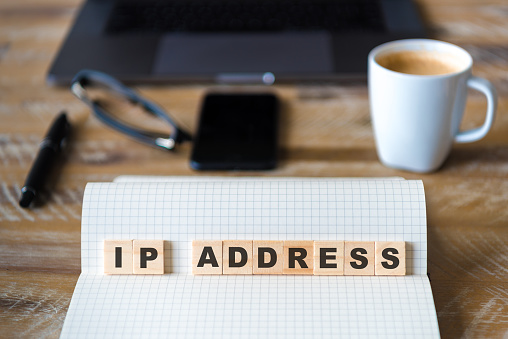IP Address 101: Types and Classes Explained
In the real digital world, IP addresses enable communication between devices and exchanging information over the Internet. Whether browsing websites, sending emails, or streaming videos, your device relies on an IP address to connect with other devices and servers. This article helps you learn about IP addresses and explore their types, classes, and significance online.
Introduction
Your device is assigned a unique number called an IP address whenever you connect to the Internet. This address is a digital passport, allowing your device to communicate with other devices and servers across the Internet. Understanding the different types and classes of IP addresses is essential for grasping how the internet functions and information is transmitted.
What is an IP Address?
An IP address is a unique number assigned to each device connected to a computer network. It serves as a unique identifier for devices and allows us to communicate with each other using the Internet Protocol. IP addresses consist of numbers separated by periods or colons, depending on the IP version being used.
Importance of IP Addresses
An IP addresses are essential to the operation of the web. They enable devices to send and receive data packets, allowing for seamless transmission of information. Without IP addresses, devices would be unable to locate and communicate with each other, rendering the Internet useless.
Types of IP Addresses
IPv4
IPv4 (Internet Protocol version 4) is today’s most widely used IP protocol. It uses a 32-bit address format, allowing for approximately 4.3 billion unique addresses. However, the pool of available IPv4 addresses is depleting due to the rapid growth of internet-connected devices. This led to the development of IPv6.
IPv6
IPv6 is the most current form of the Internet Protocol and brings with it a new set of IPs. It employs a 128-bit address format, providing a virtually limitless unique address. IPv6 offers numerous advantages over IPv4, including enhanced security, improved efficiency, and support for new technologies.
IPv4 Address Structure
IPv4 addresses consist of four numbers ranging from 0 to 255, separated by periods. The structure of an IPv4 address is divided into classes, which determine the range and purpose of the address.
Classes of IPv4 Addresses
IPv4 addresses are categorized into five classes: A, B, C, D, and E. Each class has a different range of addresses and serves a specific purpose.
Class-A:- Class A addresses are designed for large organizations with many hosts or routers. In this case, the address’s first octet identifies the network, while the next three octets are used to determine the host. The first octet always features a 0 in the initial bit, and an additional 7 bits are allocated for determining the network address. The following three octets, totaling 24 bits, determine the host. The range supported by this class of addresses is 0.0.0.0 to 0.255.255.255.
Class-B:- Class B addresses are intended for use by organizations and networks of average size, with thousands of computers or routers connected. The first two octets of the address recognize the network, with the following two octets signifying the host in that network. The first octet’s first two bits (high-order bits) are always 1 and 0, meaning the remaining 14 bits determine the network. The third and fourth octets, which consist of 16 bits, are used to identify the host. Class B’s maximum number of network blocks is 65,534, allowing for many hosts.
Class-C:- Class C IP addresses are designed for small organizations with a limited number of connected hosts or routers. Class C networks use the first three octets of the address to identify the network, leaving the last octet to determine the host. The first octet has the initial three bits that are set to 1,1,0, and the other 21 bits of it represent the network. The last 8 bits are then used to determine the host.
Class-D:- Class D addresses are utilized for multicasting groups. The concept of dividing octets into network and host identifiers does not apply to Class D. The first four bits of the first octet in Class D are always set to 1, 1, 1, 0. Class D’s address range is 224.0.0.0 to 239.255.255.255, allowing for a vast array of potential IP addresses.
Class-E:- Class E addresses are experimental and reserved for future use. The concept of network and host IDs does not apply to Class E either. The first four bits of the first octet in Class E are always set to 1,1,1,1. The address range for Class E is from 240.0.0.0 to 254.255.255.254, providing a vast expanse of IP addresses for potential use.
Private and Public IP Addresses
Within the IPv4 address space, specific ranges are reserved for private networks. Private IP addresses are used internally within a network and are not directly accessible online. On the other hand, Public IP addresses are assigned to devices connected directly to the Internet.
IPv6 Address Structure
IPv6 addresses are represented using eight groups of four hexadecimal digits, separated by colons. The expanded address space in IPv6 allows for various addressing schemes and improved efficiency in routing.
Benefits of IPv6
IPv6 brings several benefits, including:
- A significantly larger address space.
- Improved security and built-in encryption.
- Simplified network configuration.
- Enhanced support for mobile devices and Internet of Things (IoT) technologies.
IPv4 vs. IPv6: Key Differences
IPv4 and IPv6 differ in several aspects. While IPv4 addresses are running out, IPv6 provides a vast pool of addresses to accommodate the growing number of devices. IPv6 also improves security, efficiency, and support for emerging technologies. However, transitioning from IPv4 to IPv6 poses challenges due to compatibility issues and the need for infrastructure upgrades.
How to Find Your IP Address
To find your IP address, you can use various methods depending on your operating system and device. You can use the Command Prompt or access the network settings on Windows. You can find your IP address on macOS through the System Preferences or the Terminal. Mobile devices also provide options to view IP addresses in their network settings.
Dynamic vs. Static IP Addresses
IP addresses can be either dynamic or static. A dynamic IP address is assigned to a device temporarily and may change over time. Home users and small businesses commonly use it. On the other hand, a static IP address remains constant and is manually assigned to a device. Static IP addresses are used by servers, gaming consoles, and devices requiring consistent connectivity.
IP Address and Geolocation
IP addresses can provide geolocation information, allowing websites and services to approximate the physical location of a device. Geolocation can be helpful in localizing content, targeting advertisements, and enhancing security measures. However, it is important to note that IP-based geolocation is not always accurate and can be affected by factors such as VPN usage and proxy servers.
IP Address Tracking and Privacy Concerns
While IP addresses play a vital role in facilitating communication, they can also be used to track users’ online activities. Organizations and individuals can gather information based on IP addresses, raising concerns about privacy and data security. Protecting your privacy, such as using a VPN (Virtual Private Network), can help safeguard your online identity and mitigate tracking risks.
Using VPN to Hide Your IP Address
A VPN allows you to establish a secure and encrypted connection to the Internet, effectively hiding your IP address from prying eyes. By routing internet traffic through a remote server, a VPN masks your IP address and provides anonymity while browsing. VPNs are commonly used to bypass geo-restrictions, enhance privacy, and protect sensitive data.
Conclusion
IP addresses are the foundation of Internet communication, enabling devices to connect and transmit data across networks. Understanding the different types and classes of IP addresses is crucial for comprehending the workings of the Internet and addressing privacy concerns. Whether you’re using IPv4 or IPv6, knowing your IP address and protecting your online privacy can help ensure a secure and seamless internet experience.
FAQs
1. Can I change my IP address?
You can change your IP address using a VPN or reset your internet connection.
2. Do all devices have an IP address?
Yes, all devices that connect to a network, including computers, smartphones, tablets, and IoT devices, are assigned an IP address.
3. Can someone track my physical location using my IP address?
While IP addresses can provide approximate geolocation, it is only sometimes accurate. Additional information and techniques are required to pinpoint someone’s exact physical location.
4. Can I have both IPv4 and IPv6 addresses on my network?
Yes, it is possible to have devices supporting IPv4 and IPv6 addresses on the same network. This is known as dual-stack configuration.
5. How often do IP addresses change?
The frequency of IP address changes depends on having a dynamic or static IP address. Dynamic IP addresses may change periodically, while static IP addresses remain constant unless manually changed.
What is the difference between e-commerce and m-commerce?
| E-commerce | M-commerce | |
| Accessibility | E-commerce is accessible through various electronic devices, including computers, laptops, and mobile devices. | M-commerce specifically targets mobile devices, providing users the convenience of shopping and conducting transactions anywhere, anytime. |
| Device Usage | E-commerce transactions primarily occur on larger screens, such as desktop computers and laptops, which provide a comprehensive browsing experience. | M-commerce focuses on mobile devices with smaller screens, optimizing for a touch-based interface and offering a streamlined browsing experience. |
| User Experience | E-commerce websites are typically designed for a comprehensive user experience, providing detailed product descriptions, reviews, and recommendations. | M-commerce emphasizes simplicity and ease of use, with shorter product descriptions, larger images, and simplified checkout processes. |
| Location Dependency | E-commerce transactions can be conducted from anywhere with internet access, without the need for physical proximity to a store. | E-commerce transactions can be conducted from anywhere with internet access, without physical proximity to a store. |
| Security | E-commerce transactions often involve sensitive information such as credit card numbers and personal data, requiring secure encryption and authentication measures. | M-commerce transactions have additional security concerns, such as the possibility of lost or stolen devices and the need for secure mobile payment systems. |
| Payment Methods | E-commerce typically supports various payment methods, including credit cards, digital wallets, and bank transfers. | M-commerce offers additional payment methods like Apple Pay, Samsung Pay, or Google Wallet. |
| Target Audience | E-commerce caters to a broad audience, ranging from consumers to businesses. | M-commerce focuses on consumers, particularly those who use mobile devices for online transactions. |
| Scalability | E-commerce can handle large volumes of transactions and a high volume of users, making it suitable for businesses of all sizes. | M-commerce may need to improve in handling high volumes of transactions and users due to limitations in mobile device capabilities. |
| Marketing Strategies | E-commerce marketing strategies typically involve email marketing, social media marketing, and search engine optimization (SEO). | M-commerce marketing strategies may focus more on in-app marketing, push notifications, and mobile-friendly ads. |
| Development Cost | E-commerce development typically involves higher costs due to the need for comprehensive website design and development. | M-commerce development costs may be lower due to the more straightforward interface design and development requirements. |



